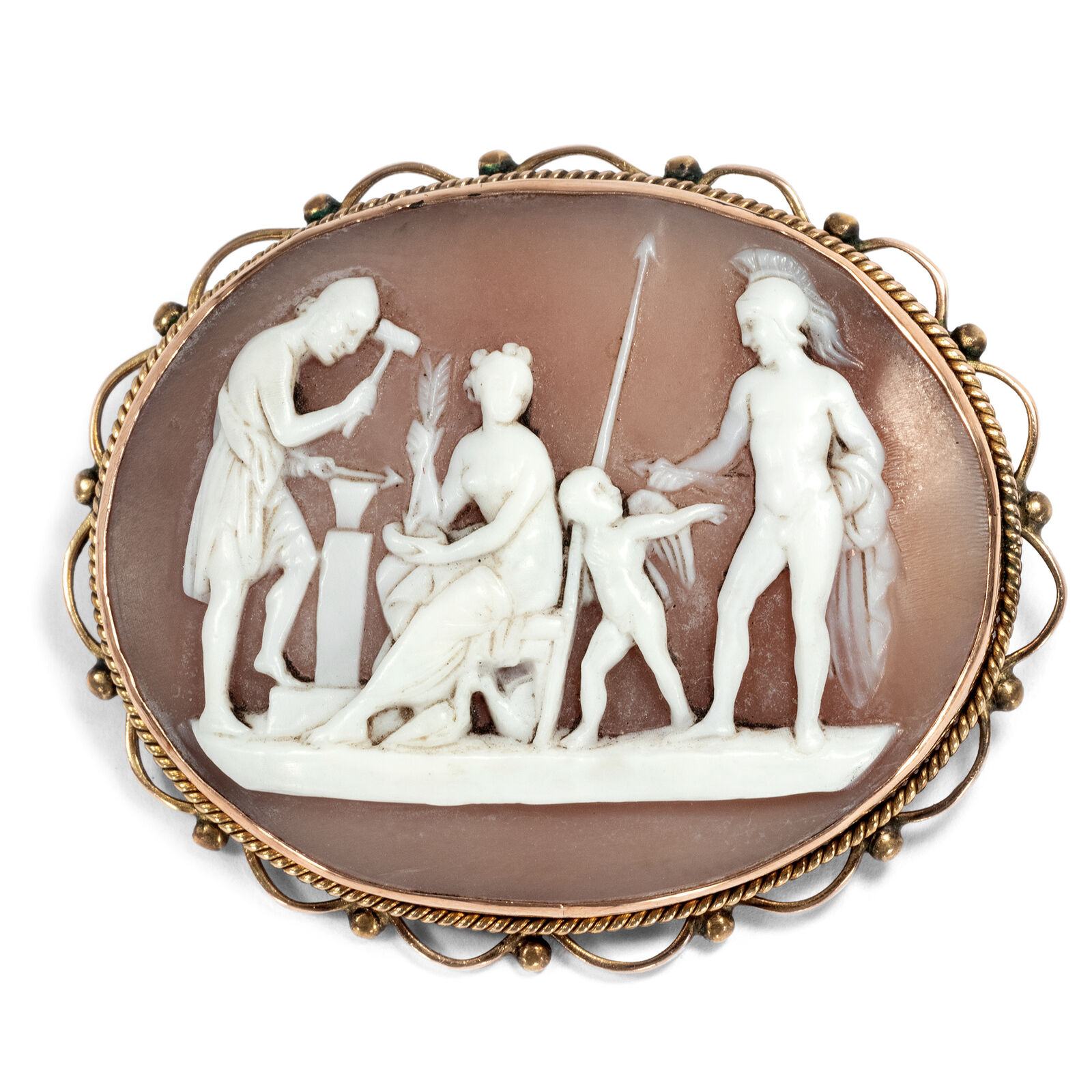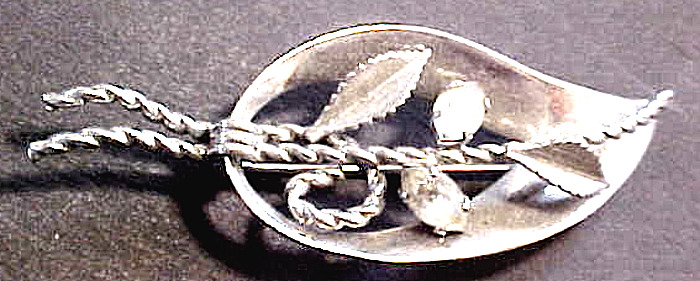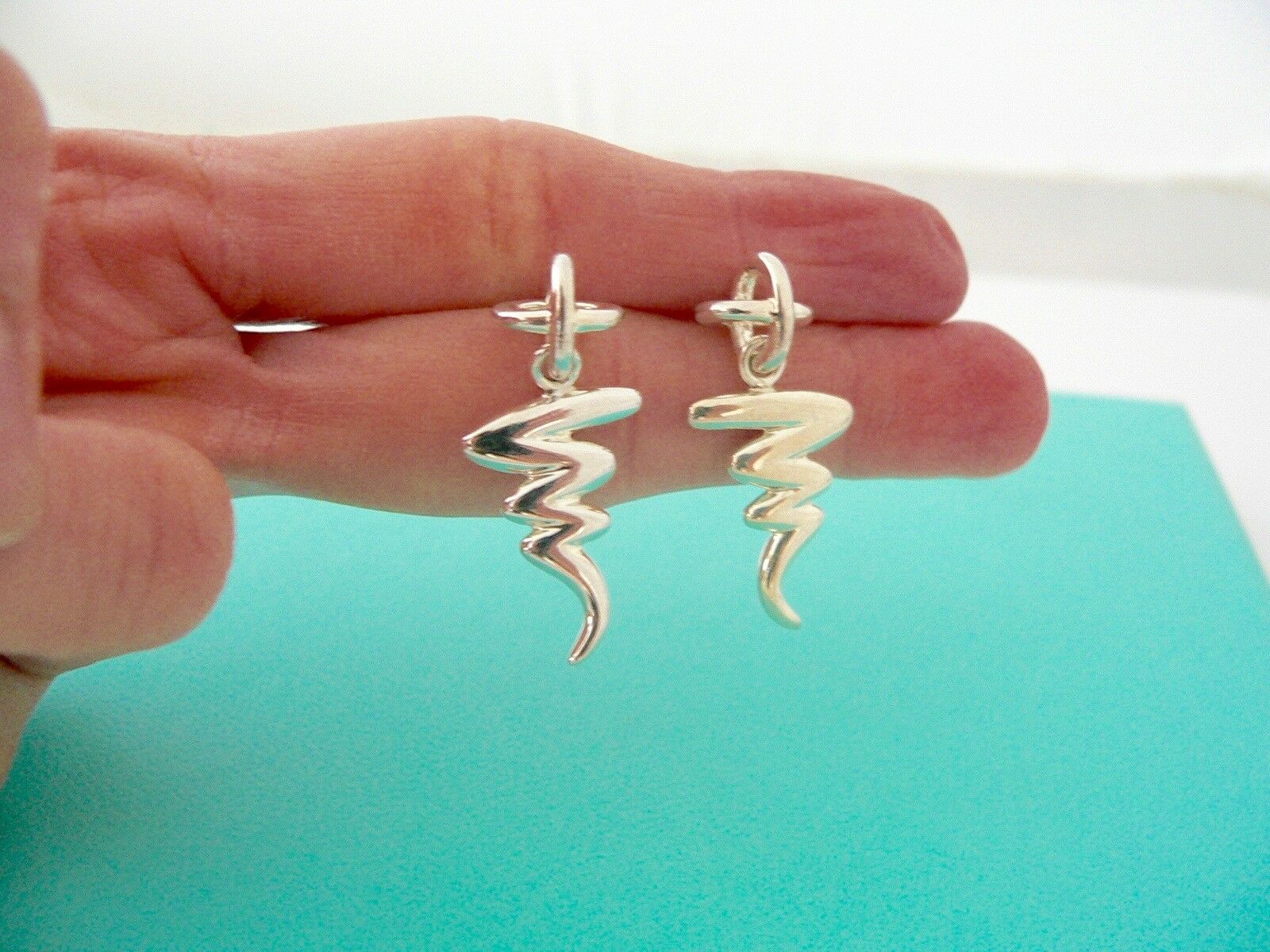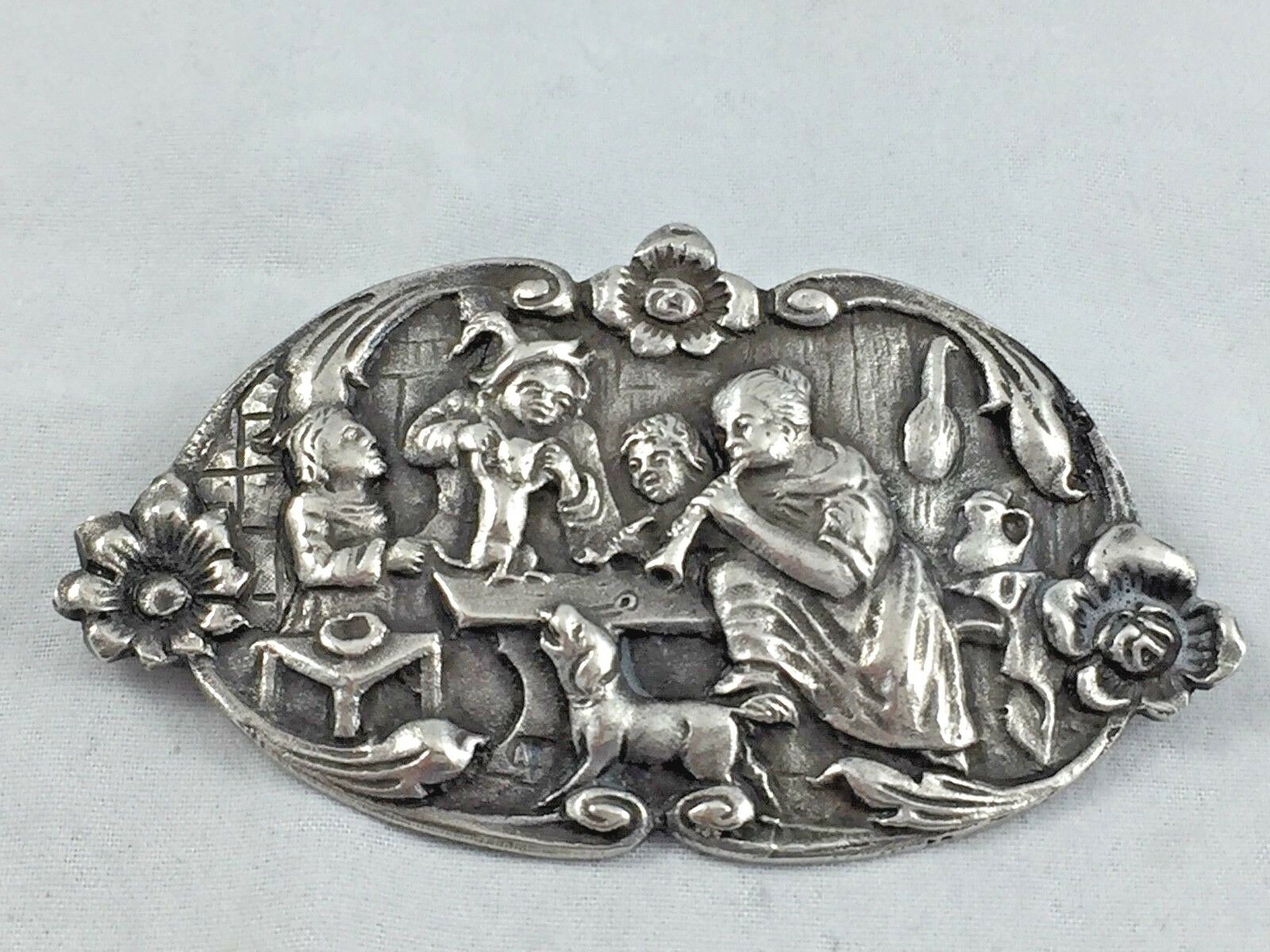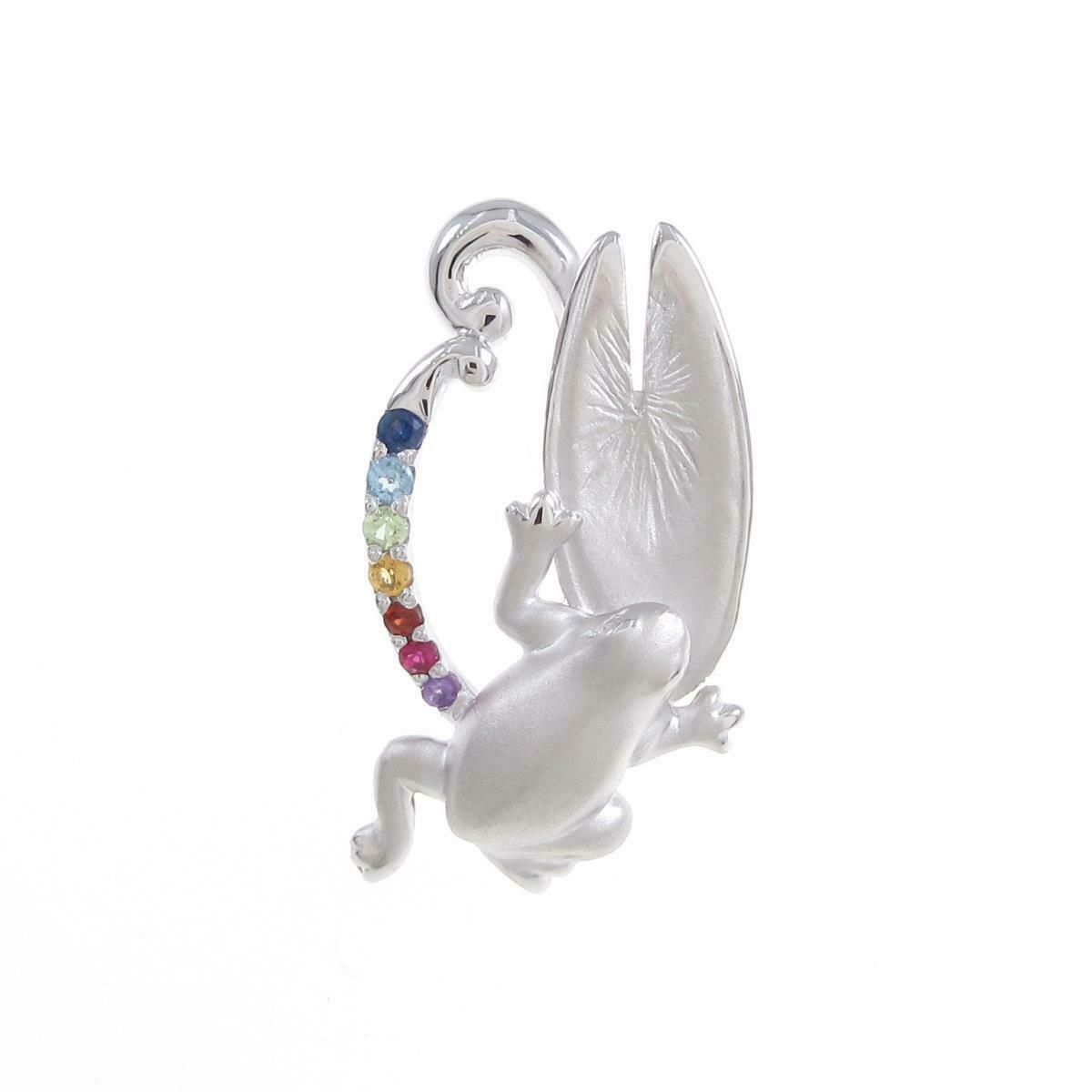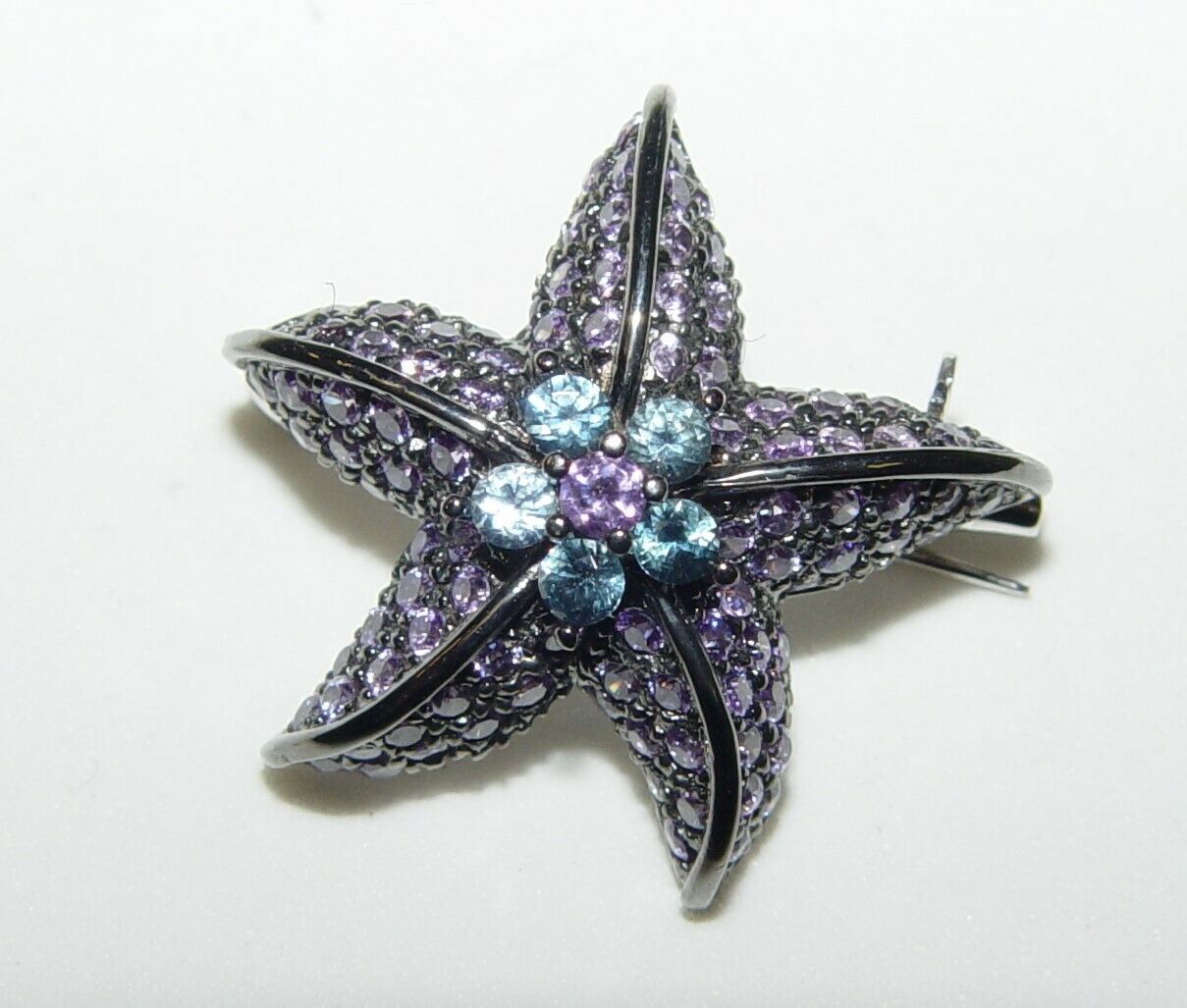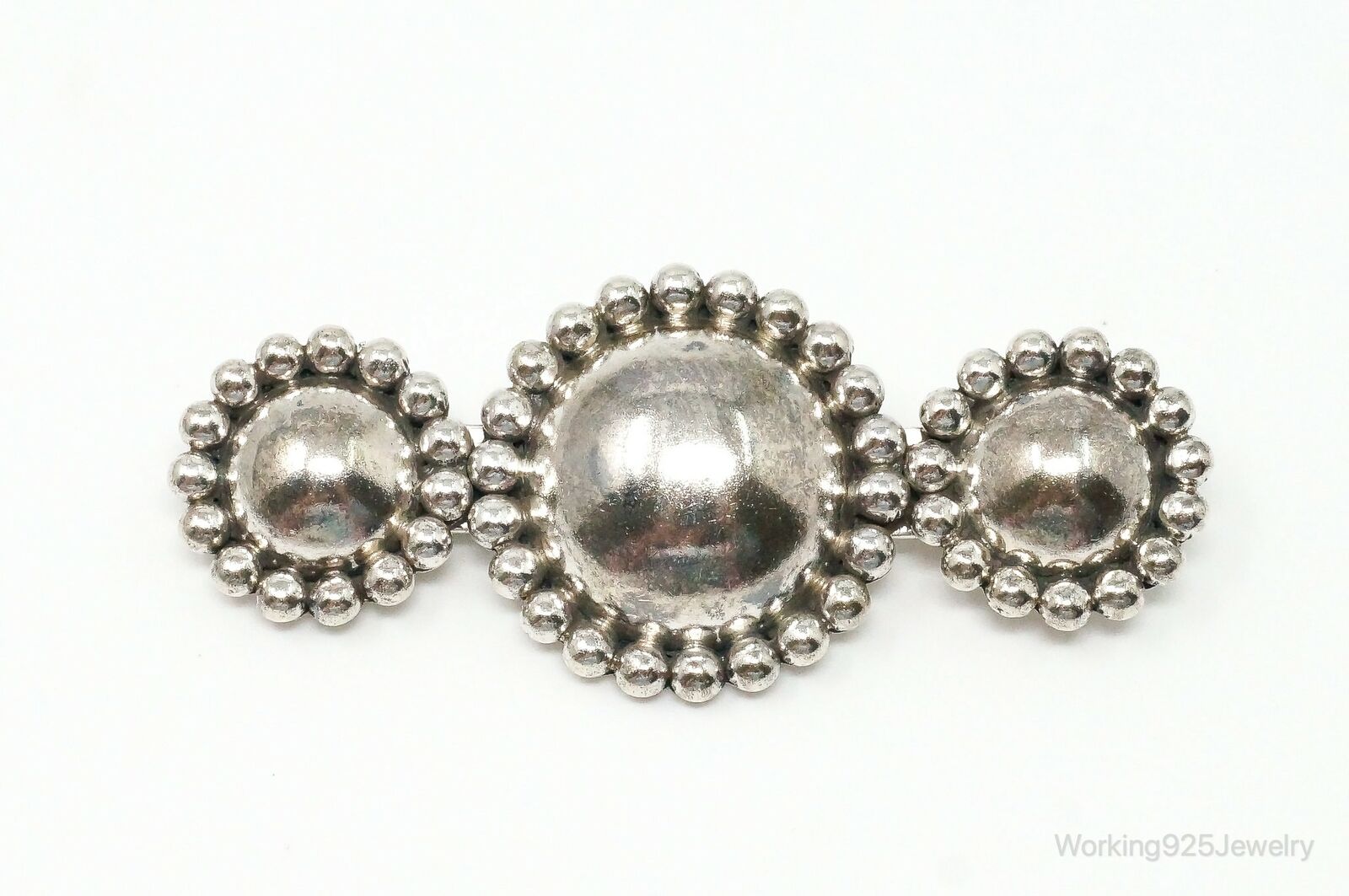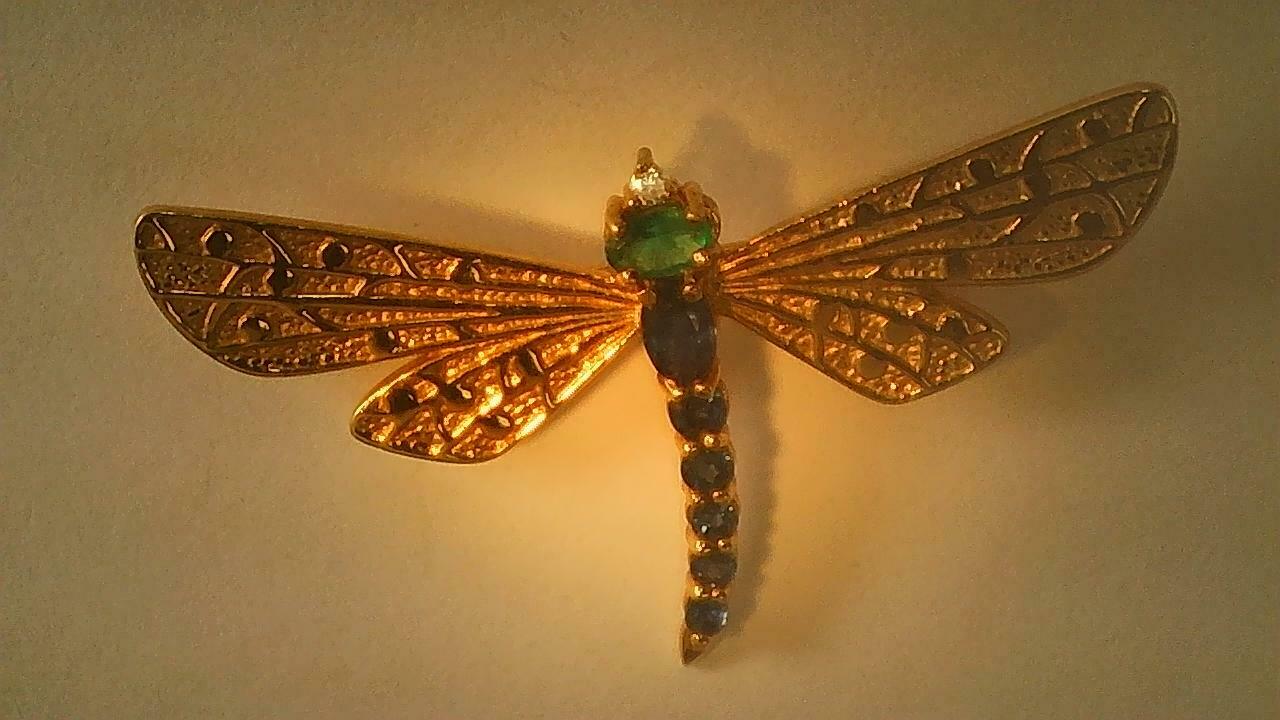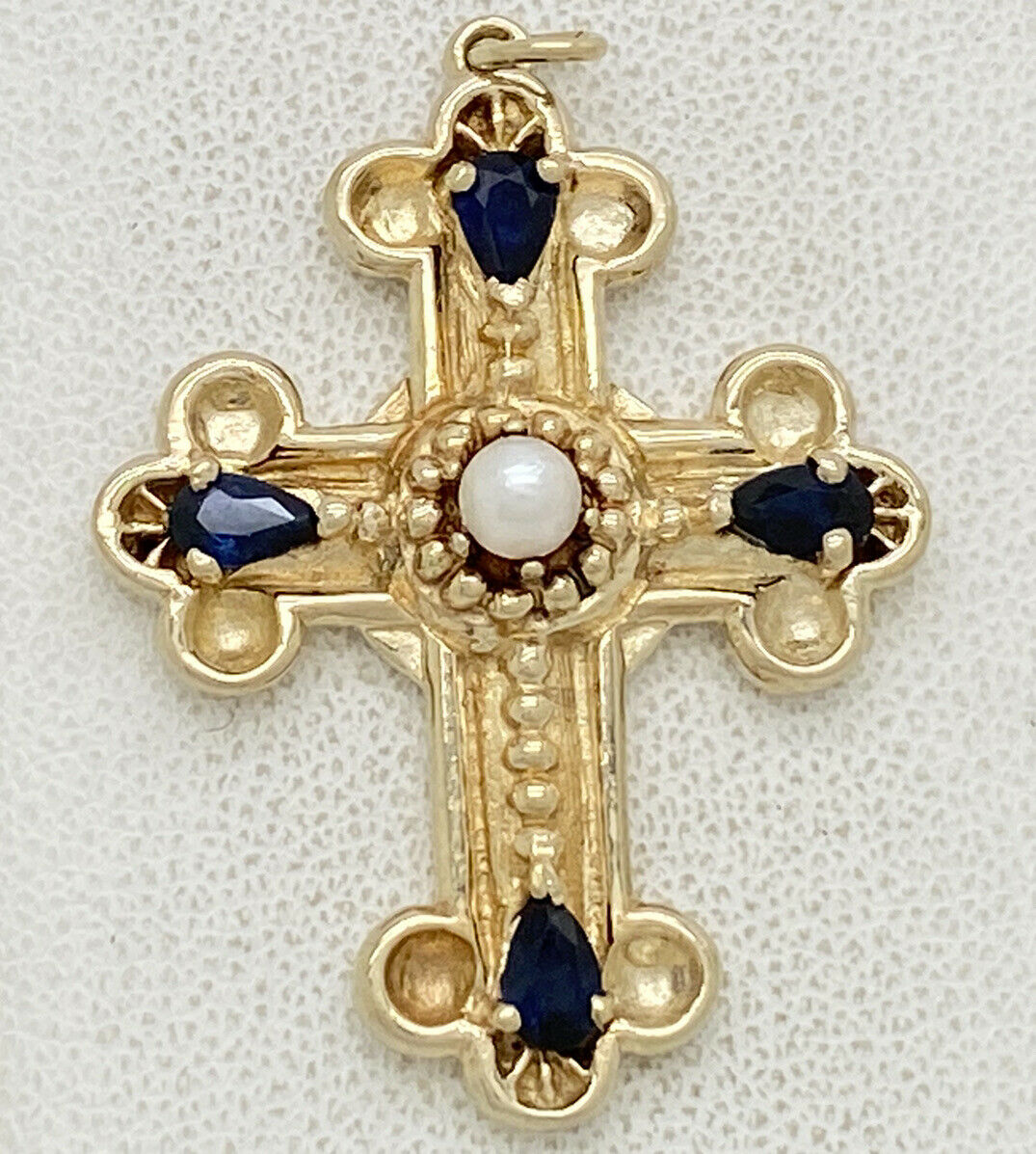-40%
Venus & Mars IN Forge Des Volcano! Fine Gem / Cameo IN Gold Um 1870
$ 463.91
- Description
- Size Guide
Description
Venus & Mars in the forge of the volcano! Fine gem / cameo in gold around 1870To our articles
To our reviews
about us
Adultery among gods
Venus and Mars in the forge of Vulkan, shell cameo in gold around 1870
description
An unusual cameo with a momentous scene from Greek mythology is presented in this offer: In a very beautiful, detailed cut, the shell of a carnelian clam is used to vary a well-known theme of antiquity that has been taken up by various artists over the centuries, it is especially delicate: on our shell gem we see the blacksmith god Vulcano on the left in his forge, hammering on an anvil, while his wife, the half-naked Venus, has sat down next to him. But the woman's attention is not directed towards the weapons that her husband Vulkan forges - but rather the young man who enters the scene from the right and identifies himself as the god of war Mars by his attributes! The cupid boy, constant companion of the goddess of love Venus, makes this clear with an excited gesture. He points to the athletic man who stands out from the bent and elderly looking volcano with his outstanding, upright and defined physique. And the appearance of beautiful Mars does not seem to fail to have an effect. The gaze of the two deities meets over the cupid boy and the adultery that begins in this scene and reported by Homer takes its course: Venus will begin an affair with Mars and Vulcan will be left behind as the horned husband. The shell shows the interesting motif from the legendary world of Greek antiquity in a grandiose implementation. A British gold setting, like the shell made around 1870, turns the scene into a brooch.
Size and details
Material:
Carved conch shell, about 2.9 x 3.7 cm 375/000 gold, equivalent to 9 carats
Rubber stamp:
Fineness “9ct” on the back of the frame
Size:
3.5 x 4.3 cm
Weight:
10.0 g
Condition:
very good
Certificate:
Object no .:
18-2026
our promise
We want you to be 100% satisfied! That is why we examine, describe and photograph all of our jewelry with the greatest care.
With our reviews of antique jewelry, you can rely on our many years of experience in the trade as well as our expertise as a trained art historian. As a member of various dealer organizations as well as the British
Society of Jewelery Historians
we have committed ourselves to the greatest possible precision here. In our descriptions, we always point out any signs of age and defects, which we do not hide in our photos - so that you do not have to experience any unpleasant surprises when our package comes to you.
If for whatever reason you are not satisfied, please contact us and we will find a solution together immediately. Regardless, you can return any item within 30 days and we will refund the full purchase price.
18-2026
powered by plentymarkets
description An unusual cameo with a momentous scene from Greek mythology is presented in this offer: In a very beautiful, detailed cut, the shell of a carnelian clam is used to vary a well-known theme of antiquity that has been taken up by various artists over the centuries, it is especially delicate: on our shell gem we see the blacksmith god Vulcano on the left in his forge, hammering on an anvil, while his wife, the half-naked Venus, has sat down next to him. But the woman's attention is not directed towards the weapons that her husband Vulkan forges - but rather the young man who enters the scene from the right and identifies himself as the god of war Mars by his attributes! The cupid boy, constant companion of the goddess of love Venus, makes this clear with an excited gesture. He poi
